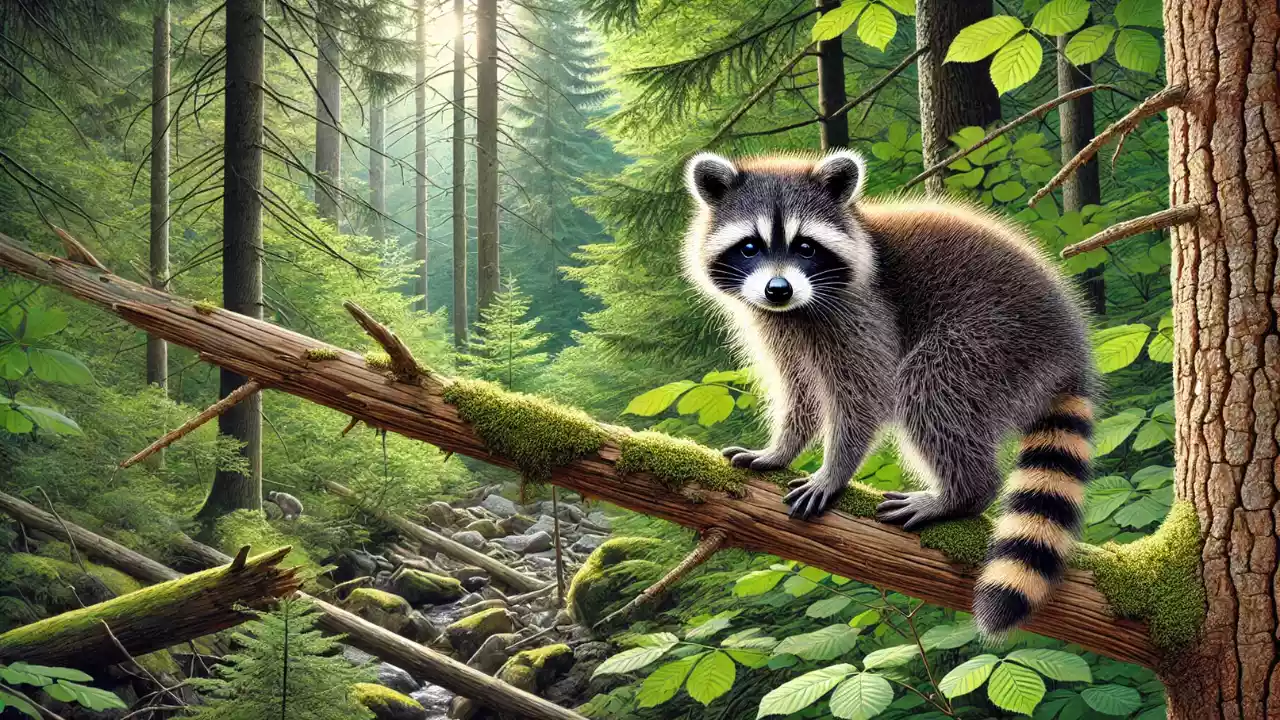Welcome to the intriguing world of raccoons! These clever and curious animals are known for their resourcefulness and adaptability. But do you know what we call a group of raccoons? Let’s explore the collective nouns used for raccoons and dive into some fun examples to help you remember them.
Collective Noun for Raccoons
| Collective Noun |
|---|
| A Gaze of Raccoons |
| A Nursery of Raccoons |
| A Mask of Raccoons |
| A Mischief of Raccoons |
| A Colony of Raccoons |
1. A Gaze of Raccoons
Explanation: The term “gaze” refers to the curious and observant nature of raccoons, often seen peering around with their bright, intelligent eyes.
Examples:
- We spotted a gaze of raccoons watching us from the edge of the forest, their eyes reflecting in the moonlight.
- A gaze of raccoons gathered near the campsite, observing us with keen interest.
- As we walked through the park, a gaze of raccoons peeked out from the bushes, curious about our presence.
2. A Nursery of Raccoons
Explanation: “Nursery” is a term used to describe a group of young raccoons being cared for by their mother, highlighting the nurturing aspect of these animals.
Examples:
- The mother raccoon led her nursery of raccoons out of the den, teaching them how to forage for food.
- We watched as a nursery of raccoons played near the riverbank, their mother keeping a watchful eye.
- A nursery of raccoons tumbled around in the grass, their playful antics bringing smiles to our faces.
3. A Mask of Raccoons
Explanation: The term “mask” refers to the distinctive black markings around raccoons’ eyes, giving them a masked appearance.
Examples:
- A mask of raccoons scurried through the garden, their dark eye markings making them look like little bandits.
- As night fell, a mask of raccoons emerged from the woods, their markings visible in the dim light.
- We spotted a mask of raccoons climbing the trees, their masked faces peeking out from the foliage.
4. A Mischief of Raccoons
Explanation: “Mischief” perfectly captures the playful and sometimes naughty behavior of raccoons, known for their curiosity and tendency to get into things.
Examples:
- A mischief of raccoons raided the trash cans, leaving a trail of wrappers and cans in their wake.
- We laughed at the antics of a mischief of raccoons as they attempted to open the cooler on our porch.
- The backyard was a scene of chaos after a mischief of raccoons explored every corner, looking for snacks.
5. A Colony of Raccoons
Explanation: “Colony” is a term used for a group of raccoons living together, often in a communal den or area, highlighting their social structure.
Examples:
- We discovered a colony of raccoons living in the hollow of an old tree, their home bustling with activity.
- The abandoned barn became a new home for a colony of raccoons, each one finding a cozy nook.
- As we explored the forest, we came across a colony of raccoons that had made their home near the stream.
Conclusion
Raccoons are clever and curious creatures that bring a sense of wonder and amusement wherever they go. Knowing the collective nouns like a gaze, a nursery, a mask, a mischief, and a colony of raccoons helps us describe these fascinating animals in their various group settings. Next time you see raccoons, use these terms to talk about their intriguing gatherings!
